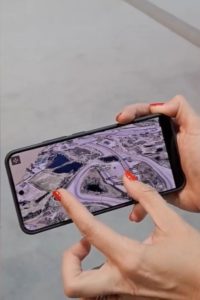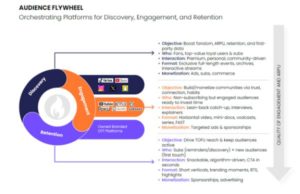Download the PDF version of the case study by clicking on this link. You can read our press release announcing our participation in the project at this link.
Wireless camera systems provide the freedom to roam a live event, to get to the heart of the action and offer high impact shots to the event director. Wireless camera systems have a reputation for delivering high and guaranteed quality images with very low end-to-end latencies – enabling the director to have the creative freedom to cut between camera systems at will.
Underpinning wireless camera systems is the COFDM RF transmission technology which delivers robust connectivity at range.

Vislink and its partners wanted to explore the capabilities for a 5G private network to provide equivalent, robust, high bit rate and low latency connectivity. The application of 5G has the potential to bring bi-directional IP connectivity to the camera, right to the edge of the broadcast contribution network.
At a recent major broadcast, Vislink and Mobile Viewpoint co-operated to run a trial and prove private network 5G wireless camera technological readiness for live event broadcasting.
The Event: Gallagher Premiership Rugby match – Saracens Vs Northampton
The Location: StoneX Stadium, London, UK
The Date: 21st May 2022
The Partners: BT Sport, BT Media & Broadcast, Vislink and Mobile viewpoint, Broadcast RF, University of Strathclyde, Neutral Wireless.
The Goal: To validate the ability to deliver low latency, guaranteed and high quality wireless camera feeds over a private 5G network
The Technology: Vislink HCAM wireless camera encoder, Vislink 5G transmitter, Neutral Wireless (University of Strathclyde) 5G private cellular network

The live coverage of a Saracens rugby game at their StoneX stadium for BT Sport provided a perfect opportunity to trial the 5G wireless camera systems on a live broadcast at this tier 1 event.
The test successfully demonstrated that 5G systems can be tailored to provide high upload data rate rates and provide excellent bandwidth efficiencies – allowing multiple 5G wireless cameras to operate simultaneously at the event.
As a private network, the deployment was separated from any contention issues that could have occurred by utilizing the public cellular network in the packed stadium.
System latencies were minimal and comparable to COFDM wireless camera networks – delivering the same creative freedom to the director to cut between wired and wireless cameras at will without fear of visible time discontinuities.
By utilizing 5G connectivity, the trial showed that it is now possible to bring bi-directional IP connectivity to the very edge – opening-up new opportunities for more interfacing, and more flexible device interfacing for camera systems.
With 5G networks directly connected to the cloud, the use of a 5G private network allows wireless camera feeds to be delivered to a remote production broadcast centre through a simpler all-IP architecture – enabling the production team to achieve greater operational efficiencies, to work on multiple events across the day, reduce business travel costs and carbon footprint and given their staff a better work-life balance.









